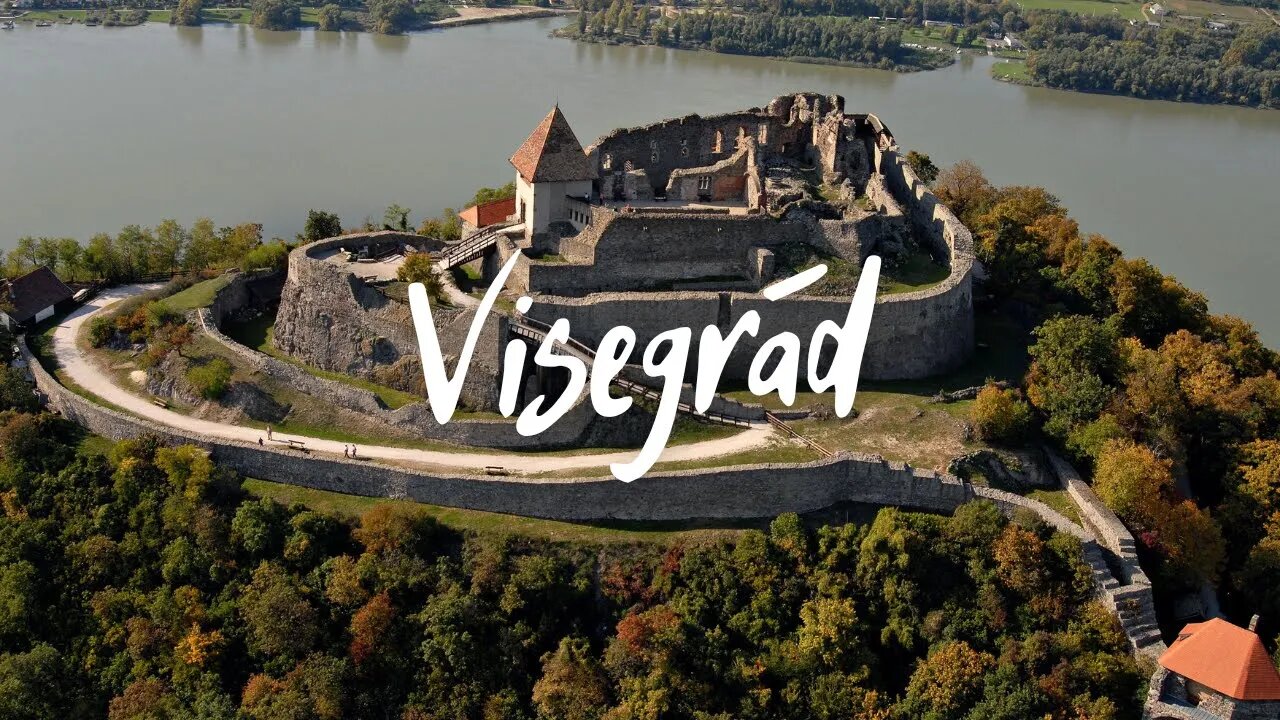Premium Only Content

Visegrád | Day Trip from Budapest | Hungary
My trip to Nagymaros and Visegrád, Hungary. June, 2019
Visegrád (Hungarian: [ˈviʃɛɡraːd]; German: Plintenburg; Latin: Pone Navata or Altum Castrum; Slovak: Vyšehrad) is a castle town in Pest County, Hungary. It is north of Budapest on the right bank of the Danube in the Danube Bend. It had a population of 1,864 in 2010. The town is the site of the remains of the Early Renaissance summer palace of King Matthias Corvinus of Hungary and a medieval citadel.
Etymology
The name Visegrád (Vyšehrad) is of Slavic origin, meaning acropolis, literary "the upper castle" (the castle with a privileged position) or "the upper settlement". In modern Slovak and Czech, the form is Vyšehrad.
The castle of Visegrád is called Fellegvár (Citadel) in Hungarian, In German, the town is called Plintenburg. The German name Plintenburg or Blendenburg is said to come from the beautiful view that one has from the castle and is "blinded"/"dazzled" by this view.
History
Visegrád was first mentioned in 1009 as a county town and the chief town of an archdeaconry. After the destructive Mongol invasion of Europe in 1242, the town was rebuilt in a slightly different location to the south. King Charles I of Hungary made Visegrád the royal seat of Hungary in 1325. At the same time, his diplomat Stephen Sáfár was appointed castellan.
In 1335, Charles hosted at Visegrád a two-month congress with the Bohemian king, John of Luxembourg, and the Polish king, Casimir III. It was crucial in creating a peace between the three kingdoms and securing an alliance between Poland and Hungary against Habsburg Austria. Another congress followed in 1339.
Sigismund, Holy Roman Emperor and King of Hungary and Croatia in personal union with Hungary, moved the royal seat to Buda between 1405 and 1408. King Matthias Corvinus (1443–1490), King of Hungary, used Visegrád as a country residence.
Visegrád lost importance after the partition of the Kingdom of Hungary following the Battle of Mohács in 1526. It was captured by the Ottomans under Suleiman the Magnificent in 1529.
In February 1991, the leading politicians of Hungary, Czechoslovakia, and Poland met here to form a periodical forum, the Visegrád Group, with an intentional allusion to the meeting centuries earlier in 1335.
Monuments
Upper Castle
After the Mongol invasion, King Béla IV of Hungary and his wife had a new fortification system constructed in the 1240s and 1250s near the one destroyed earlier. The first part of the new system was the Upper Castle on top of a high hill. The castle was laid out on a triangular ground plan and had three towers at its corners. In the 14th century, at the time of the Angevin kings of Hungary, the castle became a royal residence and was enlarged with a new curtain wall and palace buildings.
Around 1400 King Sigismund had a third curtain wall constructed and enlarged the palace buildings. At the end of the 15th century, King Matthias Corvinus had the interior renovated. The Upper Castle also served for the safekeeping of the Hungarian royal insignia between the 14th century and 1526. In 1544 Visegrád was occupied by the Ottoman Empire, and, apart from a short period in 1595–1605, it remained in Turkish hands until 1685. The castle was seriously damaged by the Turks and was never used afterwards.
Lower Castle
The Lower Castle is the part of the fortification system that connects the Upper Castle with the Danube. In its centre rises the Solomon Tower, a large, hexagonal residential tower dating from the 13th century. In the 14th century, new curtain walls were built around the tower. During a Turkish raid in 1544, the southern part of the tower collapsed. Its renovation began only in the 1870s and was finished in the 1960s.
At present, the Tower houses exhibitions installed by the King Matthias Museum (Mátyás Király Múzeum) of Visegrád. The exhibitions present the reconstructed Gothic fountains from the Royal Palace, Renaissance sculpture in Visegrád, and the history of Visegrád.
-
 29:08
29:08
Afshin Rattansi's Going Underground
1 day agoCol. Lawrence Wilkerson: World War 3 is ALREADY HERE, Netanyahu is INTENT on Greater Israel
18.6K23 -
 7:24:49
7:24:49
SpartakusLIVE
8 hours agoNONSTOP Snipes, Rockets, and BICEPS = Monday MOTIVATION
64.5K1 -
 6:31:35
6:31:35
Rallied
9 hours ago $3.11 earnedSolo Challenges All Day
55K2 -
 1:27:53
1:27:53
Flyover Conservatives
12 hours agoIs AI Actually Alien Intelligence? Dr. Jason Dean Exposes the Dark Side | FOC Show
41.3K5 -
 1:47:36
1:47:36
Glenn Greenwald
8 hours agoJD Vance and Rand Paul Clash on Due Process: War on Terror Echoes; Has the U.S. Given Up on Confronting China? Ben Shapiro's Latest Falsehoods About Israel | SYSTEM UPDATE #510
108K88 -
 LIVE
LIVE
RaikenNight
6 hours ago $1.92 earnedExploring the Galaxy of No Mans Sky
1,026 watching -
 LIVE
LIVE
Spartan
8 hours agoRanked and Expedition 33 (NG+4 and all enemies Set to 10x health)
161 watching -
 2:54:31
2:54:31
Jokeuhl Gaming and Chat
11 hours agoDARKTIDE - Warhammer 40k w/ Nubes and AoA
19.6K1 -
 2:19:56
2:19:56
Nerdrotic
18 hours ago $3.95 earnedNerdrotic Nooner 513
52.4K3 -

BigTallRedneck
7 hours agoRANKED FINALS W OMEGA
20.3K1